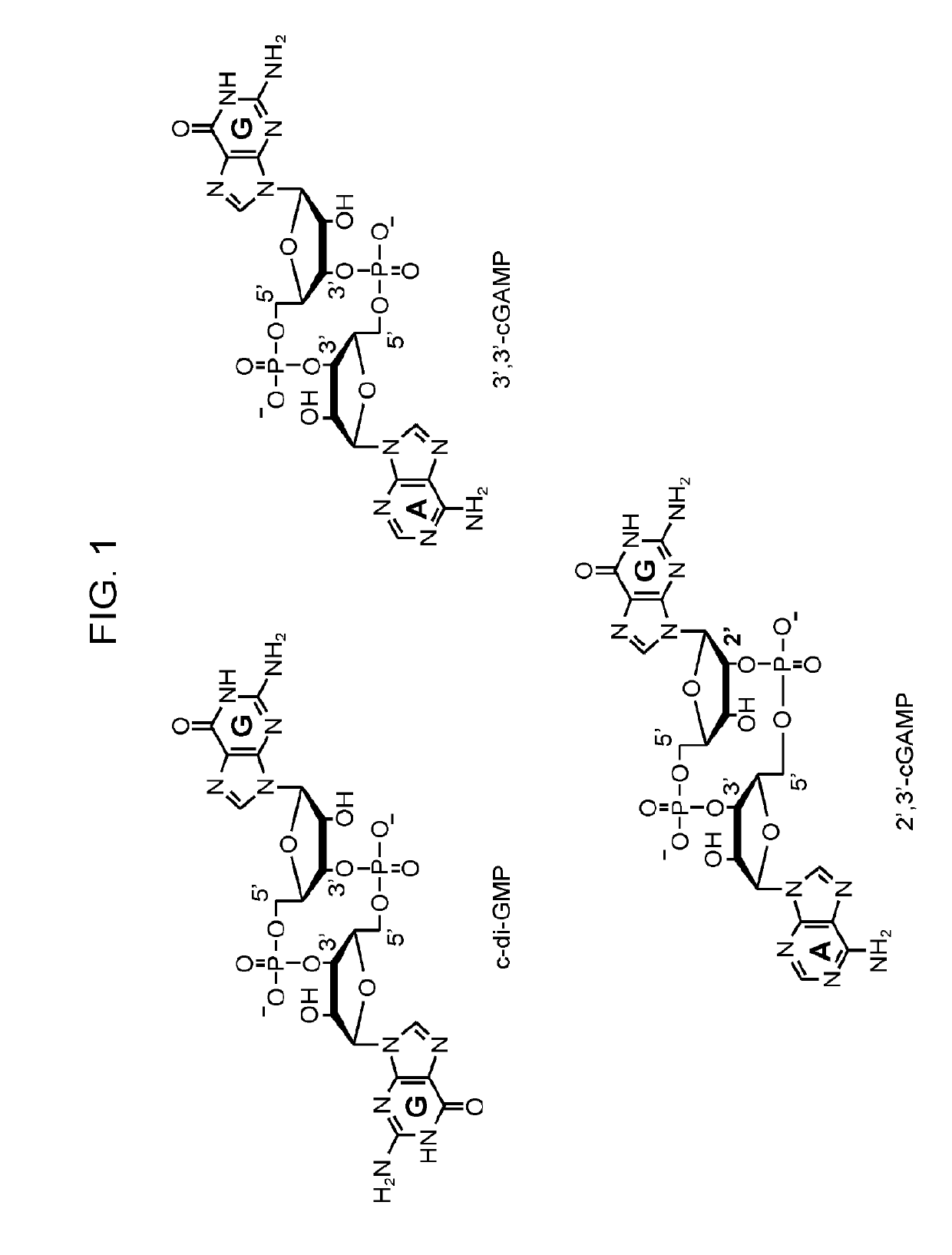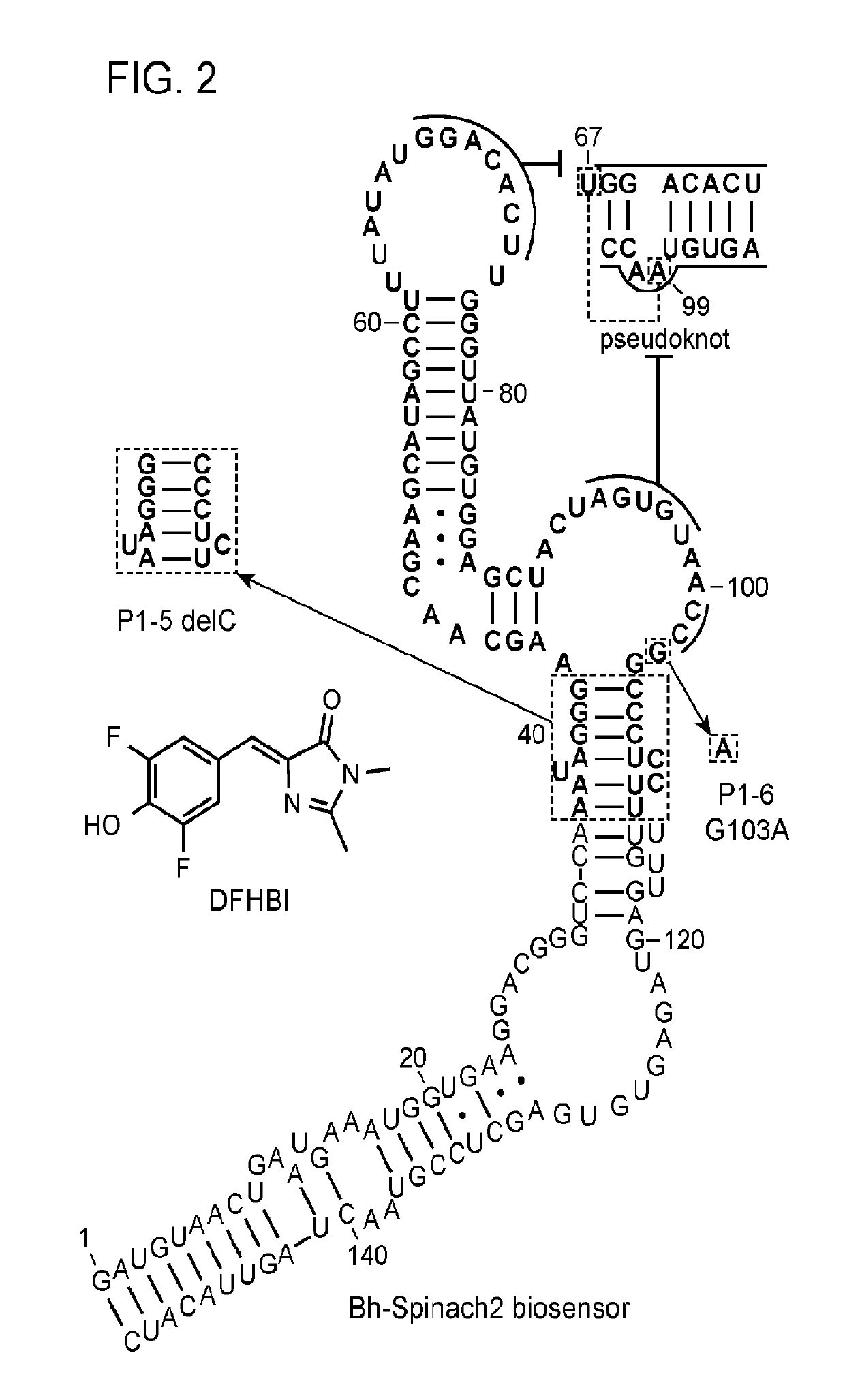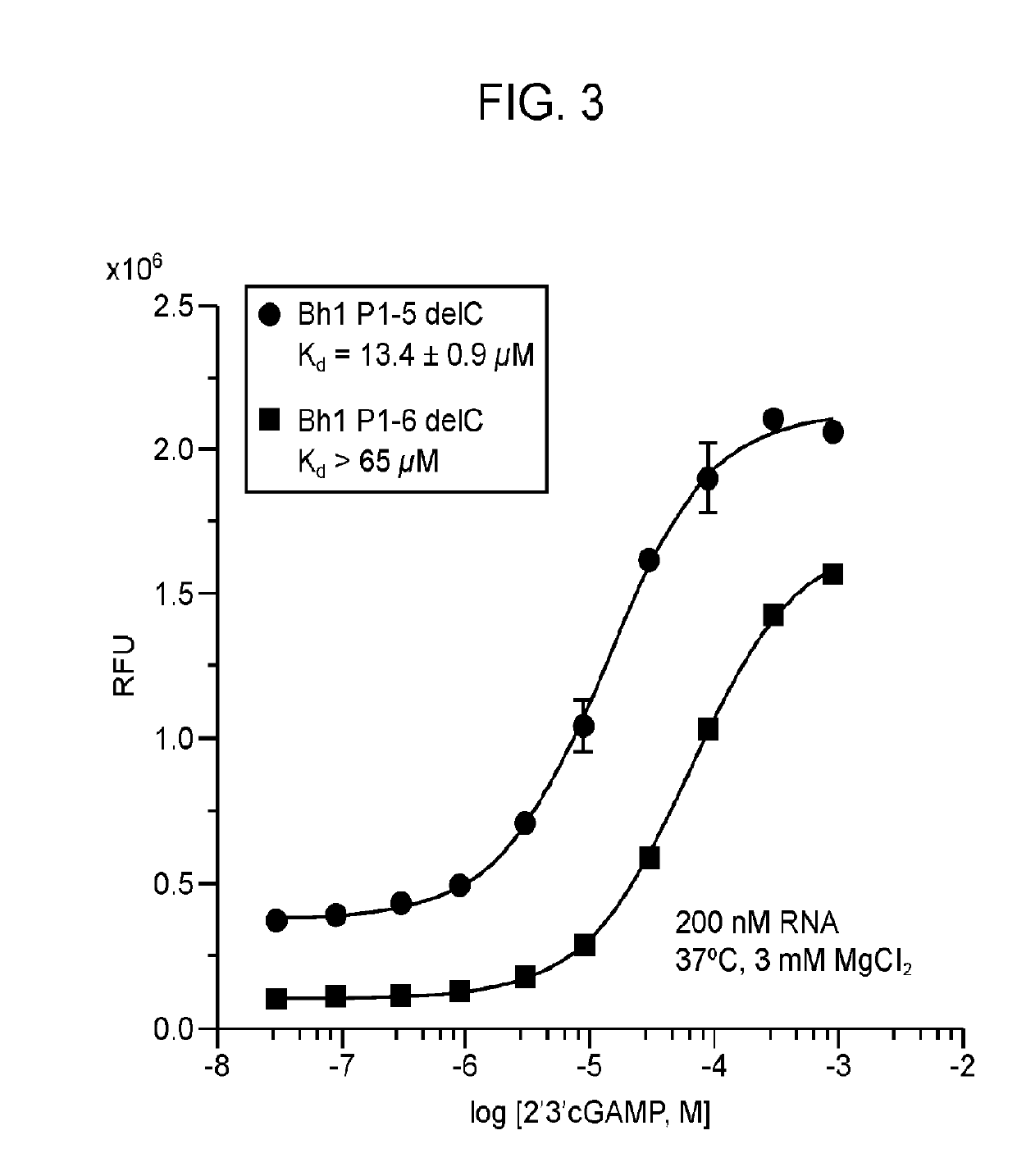Fluorescent biosensor for 2', 3'-cgamp
a biosensor and fluorescent technology, applied in the field of fluorescent biosensors for 2, 3'cgamps, can solve the problems of deconvoluting the role of the cgas/sting pathway in immune responses, and achieve the effect of reducing the difficulty of deconvoluting the role of the cgas/sting pathway
- Summary
- Abstract
- Description
- Claims
- Application Information
AI Technical Summary
Benefits of technology
Problems solved by technology
Method used
Image
Examples
example 1
a Riboswitch-Based Fluorescent Biosensors for 2′,3′-cGAMP
[0124]Fluorescent biosensors were developed that exhibit turn-on response to 2′, 3′-cGAMP which find use in direct and high-throughput methods to assay cGAS activity and in the fundamental and applied studies of the cGAS / STING immune signaling pathway. The natural protein receptor for 2′, 3′-cGAMP, STING, is poorly suited for engineering a fluorescent biosensor, because it functions as a homodimer and its structure precludes facile connection of the protein chains or circular permutation. Overexpression of STING-based constructs in vivo also may activate downstream responses, which would be an undesired physiological effect. In contrast, the subject fluorescent biosensors exhibit turn-on response to 2′, 3′-cGAMP.
[0125]The biosensors were designed by making particular mutations to natural riboswitch aptamers of the GEMM-II class that recognize the related molecule 3′, 3′-cyclic di-GMP (c-di-GMP) (Lee et al., (2010). An alloster...
example 2
and Methods
Reagents and Oligonucleotides
[0150]DNA oligonucleotides for biosensor constructs were purchased as Ultramers from Integrated DNA Technologies (Coralville, Iowa) and other DNA oligonucleotides were purchased from Elim Biopharmaceuticals (Hayward, Calif.). DFHBI and DFHBI-1T were either purchased from Lucerna (New York, N.Y.) or were synthesized following previously described protocols and were stored as a 10-30 mM stock in DMSO. C-di-GMP, 3′, 3′-cGAMP, 2′, 3′-cGAMP were purchased from Axxora (Farmingdale, N.Y.). Commercially available reagents were used without further purification. T7 RNA polymerase, Phusion DNA polymerase were purchased from New England Biolabs Inc (Ipswich, Mass.). Chemically competent BL21 (DE3) Star cells were purchased from Life Technologies (Carlsbad, Calif.). cGAS inhibitor (Quinacrine dihydrochloride), HT-DNA, Snake venom phosphodiesterase (SVPD) was purchased from Sigma-Aldrich (St Louis, Mo.). L929 and HEK293T cells were purchased from ATCC (Man...
PUM
| Property | Measurement | Unit |
|---|---|---|
| dissociation constant | aaaaa | aaaaa |
| dissociation constant | aaaaa | aaaaa |
| dissociation constant | aaaaa | aaaaa |
Abstract
Description
Claims
Application Information
 Login to View More
Login to View More - R&D
- Intellectual Property
- Life Sciences
- Materials
- Tech Scout
- Unparalleled Data Quality
- Higher Quality Content
- 60% Fewer Hallucinations
Browse by: Latest US Patents, China's latest patents, Technical Efficacy Thesaurus, Application Domain, Technology Topic, Popular Technical Reports.
© 2025 PatSnap. All rights reserved.Legal|Privacy policy|Modern Slavery Act Transparency Statement|Sitemap|About US| Contact US: help@patsnap.com



